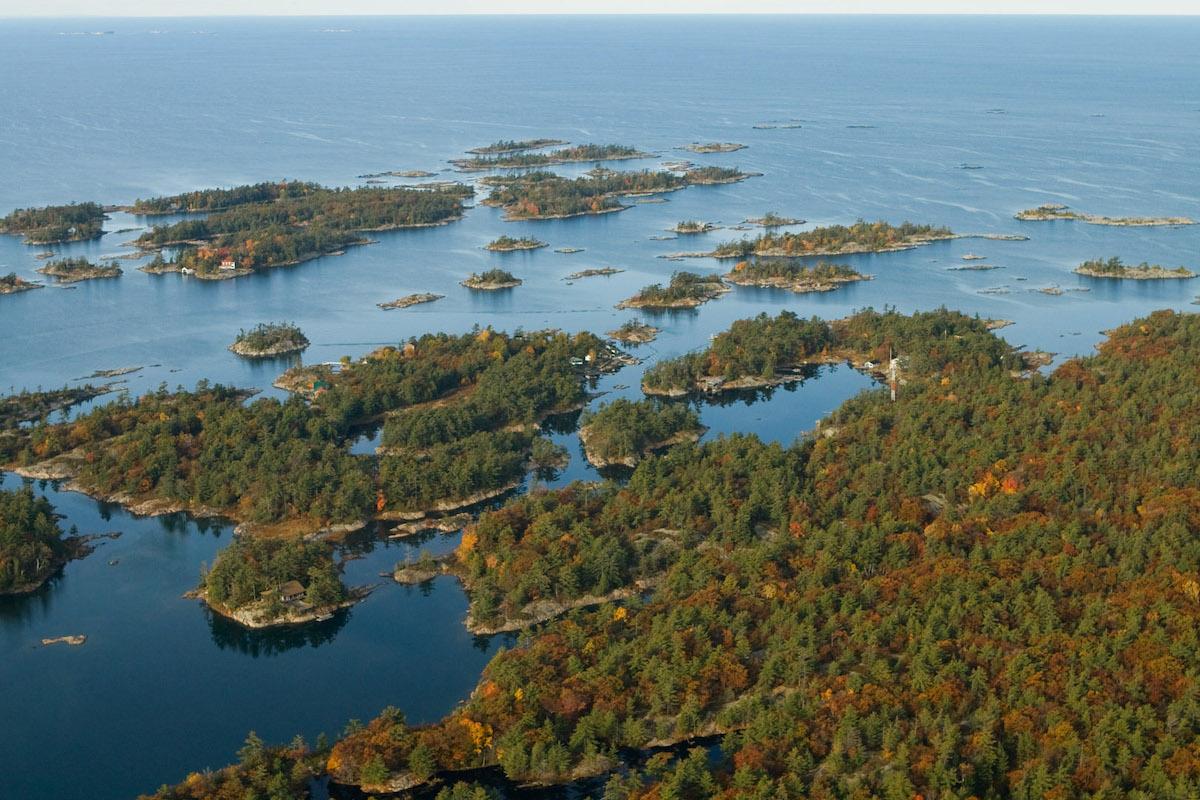
An aerial shot of some of the northern islands of Georgian Bay Islands National Park/Parks Canada
Parks Canada is having a virtual open house March 23 to hear from Canadians and Indigenous groups as it seeks input on a new draft management plan for Georgian Bay Islands National Park including Beausoleil Island National Historic Site.
Just 90 minutes north of Toronto, Georgian Bay Islands protects 63 islands within the world’s largest freshwater archipelago, stretching for 50 kilometres (31 miles) along eastern Georgian Bay. Beausoleil Island is the main island, a 15-minute boat-ride from Honey Harbour, and the hub of visitor activity.
The park is home to more than 30 species of amphibians and reptiles, and the landscape is barren, glacier-scraped rock and windswept pines. The Precambrian granite of the Canadian Shield transitions to forests of sugar maple and beech, punctuated by occasional conifers. People come on day trips — the park runs a DayTripper ferry — and overnight to hike, bike, swim, boat and camp.

Marsh marigold blooms at Georgian Bay Islands National Park/Parks Canada
Beausoleil Island is also a national historic site. For more than 7,000 years, people have been living in this area and Parks Canada presents and celebrates the contributions of Indigenous peoples, their histories, cultures and special relationship with traditional lands and waters.
Parks Canada is preparing a management plan to guide decisions and actions in protecting, presenting and operating the park for the next decade and beyond. The draft plan has identified opportunities related to resource conservation in a fragmented landscape and long-term asset sustainability in the wake of climate change. It aims to enhance visitor experiences and facilitate easier access, strengthen the park’s formal relationships with Indigenous communities, and find ways to improve park awareness and community support.
The March 23 online public consultation meetings run from 7 p.m. to 9 p.m. in English and French. You must register at least 24 hours in advance by emailing [email protected]
to receive connection details. Feedback can also be shared in an online questionnaire.
Georgian Bay Islands, under the Canada National Parks Act, protects 63 islands and actively manages 50 of them, while the remaining 13 are managed through Fathom Five National Marine Park.

 Support Essential Coverage of Essential Places
Support Essential Coverage of Essential Places



